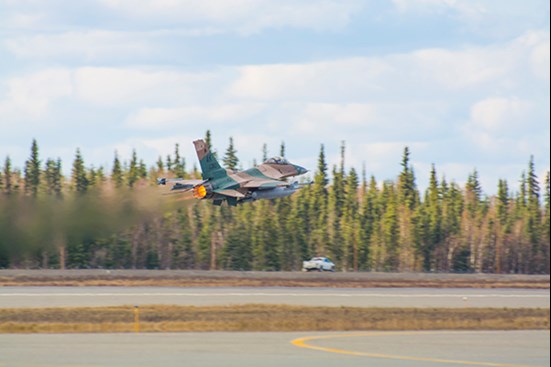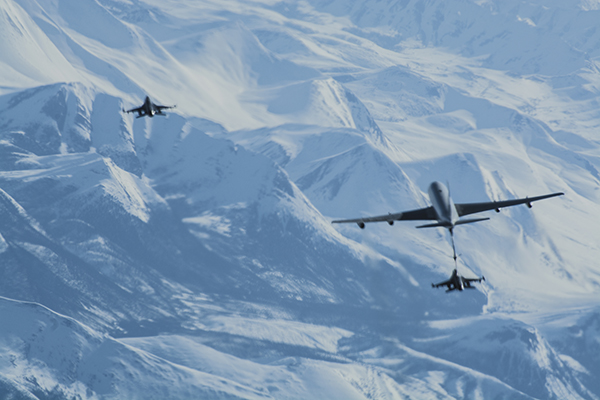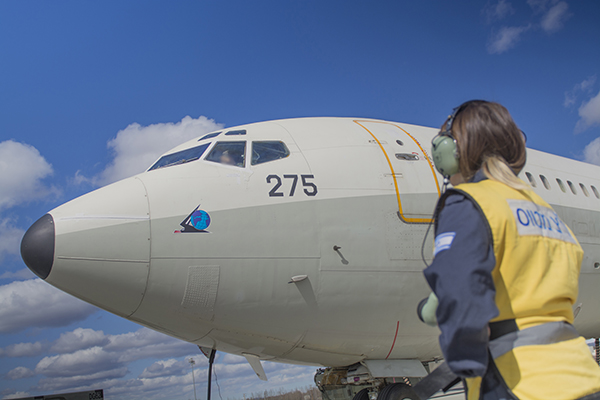A Firsthand Account of the Red Flag Exercise
One week before we left for Alaska we summarized the past year’s work, the personnel was briefed, and the planes and cargo were prepared. We left after commemorating Yom Hazikaron (Memorial Day) and celebrating Yom Haatzmaut (Independence Day).
Due to the regional situation, it was decided to change the outline of the exercise and we had a week to prepare.

We have benefited from an exercise in flexibility and coping with change, it took one year to transfer the planes from Israel to Alaska, the return and deployment of the plane changed and so we had a week to prepare, together with the disappointment over the change in the light of work and investment, everyone understands the situation and the reasons for the changes. At the same time, conduct combat procedures and operational preparations on various issues. We have benefited from the readiness of airplanes and people, enabling us to prepare for parallel activity on both ends of the globe - in Israel and in Alaska.
We leave, 2 planes one after the other, air crews, technicians, loading inspectores, security, and administrators - everyone’s on board, going west. A day and a half later, 18 hours of flight and 8,000 miles we first landed in Alaska, the westernmost point on the globe reached by the IAF to this day. The road to Alaska is white and covered with snow, filled with icy forests and frozen Canadian lakes.


The two planes land. After the engine is shut off, the crews go out into the freezing cold and thus extended the arm of the IAF to a brand new destination. The IAF is known for its far reach. To top it all off, it was one of the crew members’ last flight, concluding his 37 years of service. He landed in Alaska and retired at the peak of his career.
The exercise began with the first flights, we began to get to know the area, and had briefings. Unlike in Israel, where we’re familiar with the airspace and are able to work almost automatically, in Alaska every move we make is calculated and thought out.
For us, the first time American aircraft entered the big picture was a special moment. Normally fueling aircraft is not a remarkable event, but seeing an Israeli gas line fueling American aircraft was like witnessing the link between us as friends and partners. Between the flights we met the American soldiers and air crews and our informal meetings revealed how close we were and how much we had in common.
During the week, flight after flight, from debriefing to briefing we felt the improvement, things become more understandable and we learned new things from each flight.
After three days of flight we understand that we have nothing to be ashamed of, a high level of professionalism, skill, experience, and creative approach - the values inherent in us from the day of enlistment to the IDF from the planning, in the air, and the investigative stages.
At the same time we learn a lot, are exposed for the first time to another refueling squadron that carries out the tasks in a similar but different way, to a new method of work - our eyes opened and there was a great thirst to see the mission from another point of view, a new approach, and a different perception.
Meanwhile, there was a squadron in Israel working on operational activity and my stomach was turning. I was in Alaska, while the situation in Israel was very unstable, the squadron in Israel was very busy with operational activity and I questioned if I should be here at all. Immediately afterwards, I told myself that the people in Israel are the best, I trust them fully, and the “problem” was all in my head. Then I felt a great sense of pride. It’s amazing that we have such good people that enable us to operate on opposite ends of the world, while carrying out complex and important missions that contribute to the security of the State of Israel.


Alaska changes fast, we landed in the snow and white everywhere, and after two weeks it all starts to be green, along with the change in the weather and the color of nature around us. I sat in the last flight briefing, the people were familiar and spoke Hebrew, but the words were all new. The Eielson Air Force Base became the home base and the aim of the Red Flag exercise was clear to all of us, we were focused and ready to embark on the mission.
Landing after the last flight, everyone was safe and sound, we completed all of our missions accurately and professionally. We are entered the final debriefing of the exercise and my sense of our success was growing and I could tell that we met the goals we had set for ourselves. This was significantly reinforced by the reactions and feedback received from our American counterparts, compliments and appreciation from both the exercise manager and the crew members of the other squadrons. It was amazing how good all of the feedback was and we were all very pleased.
We concluded two excellent weeks in Alaska, we succeeded at all of our missions, we exceeded our expectations, enabled the IAF to think about and do new things that have not yet been attempted. This partnership has great potential and we will continue to advance it.
As commander, I am very proud of the trust we placed in those who organized the Red Flag exercise, the people in the regular army, those reserves, those in career service, those under the “wings” of the IAF, operational soldiers, manpower NCOs, logistics soldiers, and air crews - we have excellent people and it’s my pride and privilege to be their commander.



